Sales Process Optimization: Everything You Need To Know
60% of sales representatives struggle with poor workflows. If your sales process optimization feels sluggish and you are looking for tactics to implement, you are in the right place.
In this guide, we will break down the top industry practices that can transform your sales pipeline with the help of remote sales strategies. Reading through, you will have a toolkit of practical tactics that can enhance your sales efficiency and drive tangible results.
Let’s dive in.
Sales Process Optimization: Quick Overview
Sales optimization is the process of examining your sales process closely and identifying ways to improve it. This means you need to eliminate any steps that slow things down or add unnecessary complexity to it.
Here, we list the 3 steps of the sales process if you intend to sell to prospects who are single decision-makers:
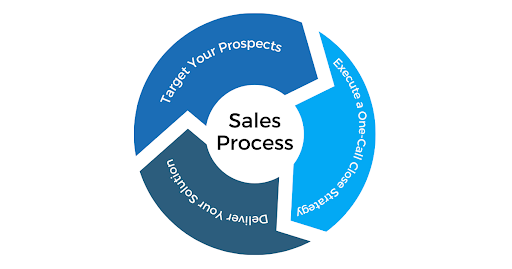
- Target Your Prospects: Create a list of prospects that fit your ideal customer profile for sole business owners. Assess their needs and challenges to establish a connection and initiate a call that piques their interest.
- Execute a One-Call Close Strategy: Cut your sales cycle in half in just one call. Instead of relying on a lengthy sales process, use this strategy to sell, address their pain points, and create a sense of urgency to purchase in one go.
- Deliver Your Solution: Fulfill the order as fast and efficiently as possible. Provide clear instructions or support post-sale and continue to nurture and upsell to encourage repeat business for the long term.
A key starting point is to assess what is working and what is not. Check out your customer experience from initial contact to the final sale and figure out where things slow down or where salespeople face challenges.
Once you know what’s causing problems, quickly make the necessary changes. Look for tools that can automate repetitive tasks or simplify steps, so your team can focus more on improving customer experience by 86% and closing deals by up to 50%.
Here at CrankWheel, we make the sales process mission-critical for both inbound and outbound sales. Our screen-sharing platform lets you know exactly what your prospects see and when they are engaged just through their mouse movements. If they switch tabs, we will notify you right away so you can re-engage with them and better meet their needs.
How To Optimize Sales Processes: 9 Steps + Examples
As you go through each step, think about a recent sale that didn’t close and consider how implementing each step impacts your conversion rates.
Step 1: Build Your Ideal Customer Profile (ICP)
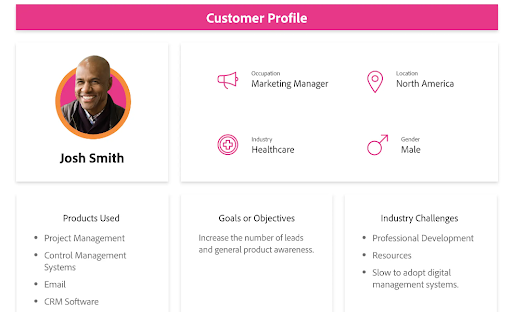
Your Ideal Customer Profile (ICP) outlines the characteristics of the companies or individuals who would benefit most from your product or service. A well-driven ICP sales strategy can increase your win rate by up to 68%. Typically, your ICP should highlight:
- Industry
- Company size
- Business model
- Technology stack
- Geographical location
- Challenges and pain points

Once done, follow these key points:
- Make a list of your top 10 customers and identify common traits.
- Write down the top 3 problems you solve and match them to customer types. If 90% of your customers are looking for solution X, you know who to focus on.
- Create a customer persona using specifics, like “Marketing Directors at SaaS companies with 50–200 employees, based in the U.S.”
- Look at the demographics (age, gender, education) and firmographics (business size, revenue, industry) that align with your customers to fine-tune your targets.
- Review your sales data and look for patterns in how long it takes customers to buy and what questions they frequently ask.
- Set a calendar reminder to review your ICP every 6 months and update it as needed based on new data.
Step 2: Develop A Conversion-Focused 1-on-1 Sales Pitch

A conversion-focused pitch is all about creating a clear, confident, and personal sales experience that makes the customer feel like they are making the right choice. Instead of generic sales talk, address their needs and show how your products solve their problem. As you do this, you build trust, make the customer feel valued, and increase your chances of closing the sale. The more tailored and direct your pitch, particularly using these seasonal marketing strategies, the more you convert prospective leads into a paying customer.
Here’s how to develop a conversion-focused 1-on-1 sales pitch:
- Research your customer. Before you start the conversation, learn about their challenges and what they’re looking for. A good elevator pitch should be short, personalized, interesting, and confident to resonate with their situations and encourage them to engage.
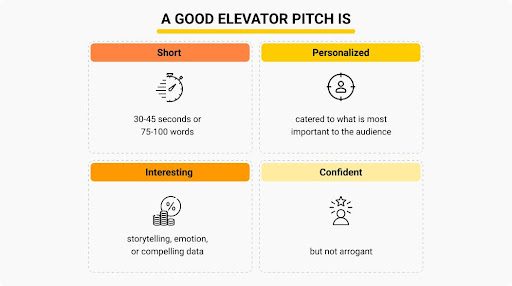
- Open with a hook that grabs attention, like a question or statement related to the problem. For example, “Is your team spending too many resources managing [specific challenges] when automation could do it faster?”
- Clearly explain the issue they are in so they know you understand their situation.
- Show them how your product or service directly solves their problem.
- Ask questions throughout the pitch to make sure they’re involved and following.
- Let them know why “now” is the best time to take action.
- End with a clear next step. Make it easy for them by telling them exactly what to do next, like scheduling a follow-up call or signing the deal.
At CrankWheel, we make your 1-on-1 sales pitch more dynamic. Our platform lets you share your screen with prospects during a live call so you can walk them through your presentation, product demo, or proposal in real-time. Our goal is to help your customers better understand the value of what you are offering to help you close more deals easily.
Step 3: Map Out Your Customer Journey To Identify Pain Points
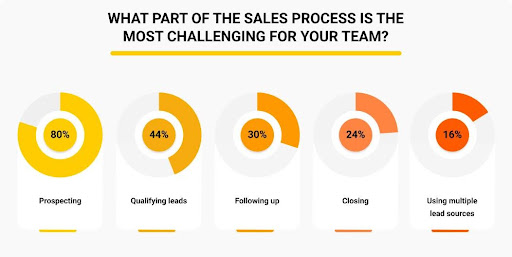
Prospecting is the most challenging part of the sales process. It’s tough to find qualified leads who are ready to buy, and it is easy to spend time chasing ones who are not likely to convert. However, by mapping out your customer journey, you can better understand where prospects come from, what motivates them, and how to engage them.
Mapping out your customer journey gives you a clear view of how customers interact with your business, from discovery to purchase. This lets you identify where they might face issues, get confused, or drop off so you can tailor your sales calls to their core needs.
Here’s a sample template to map out a customer journey:

As you go through the process, your goals should be:
- Review each step of your customer journey to identify gaps. Are there stages where prospects drop off or become disengaged?
- Look at the frequency and style of communication with your prospects. Reduce unnecessary contact that might overwhelm them.
- Pinpoint stages where sales efforts seem to stall. Work with your marketing team to create campaigns that can better engage prospects at those sticky points.
- Analyze your sales pipeline to see if there are leads that have not been followed up with or potential deals that can be nourished further.
- Focus on nurturing relationships with existing clients. Provide excellent post-sale support and ask for reviews, testimonials, or referrals. You can even create incentives for clients who become your sales advocates, like referral bonuses.
For example, if you’re an expert in providing specialized home services like this residential window washing service and notice prospects drop off when scheduling appointments, it might indicate that your booking process is too complex. To address this, stick to the average 5-7 key steps and offer customizable date and time options that work best for their schedules.
Step 4: Analyze Your Current Sales Process & KPIs

44% of salespeople give up after one follow-up, while 80% of sales require at least 5 follow-ups to convert. Analyzing your KPIs (Key Performance Indicators), like the average sales margin and conversion rates, helps you address those issues and optimize your sales process that benefits your customers most.
Here’s how you do it:
- Assess your entire sales process. What happens from the moment a lead is contacted to when they make a purchase? Do you have a clear flow from prospecting, engaging, following up, and closing the deal?
- Check how your sales KPIs meet your goals, which typically include:
- Conversion Rate: A typical conversion rate is around 2-5%, but high-performing teams can hit 10% or higher.
- Sales Cycle Length: How long does it take from first contact to a signed deal? The shorter the cycle, the better.
- Average Deal Size: What’s the average value of each sale? Bigger is usually better, but consistency matters too.
- Ask your sales managers for feedback. Does the process feel inefficient? Are they wasting time on unqualified leads?
- Once you have your KPIs and feedback, look at the data and see the pattern. Do deals tend to fall apart as you negotiate? Or do leads get cold after the first meeting?
- Based on your analysis, make targeted changes to your process. Improve your follow-up strategies or give your sales reps better tools to close deals faster.
Step 5: Implement Lead Scoring Systems To Target High-Value Prospects
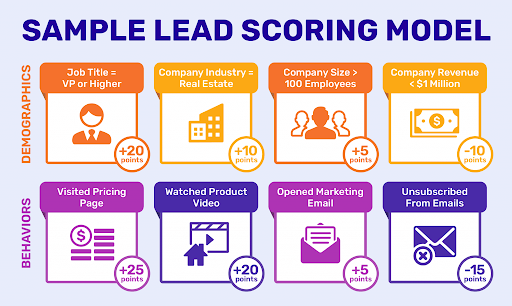
A lead scoring system is a marketing and sales tool that ranks leads based on their potential value to your business. Implement this system to allocate your resources more effectively and avoid wasting time on leads that are not ready to buy.
Here’s what you need to do:
- Define what makes a high-value lead. Collaborate with sales and marketing teams to create a clear profile of your ideal customer.
- Identify key behaviors. For example, look at actions like downloading resources, opening emails, or visiting high-value pages on your website.
- Assign point values. Give higher scores to more critical behaviors (ex. attending webinars might be worth 10 points, while unsubscribing from emails is worth -15).
- Use sales tools for automation like HubSpot or Salesforce to automatically track and score leads based on their activity.
- Sync your lead scoring system with your CRM to make sure your sales teams have up-to-date lead insights.
- Track conversion rates and lead-to-sale time to assess if the system really scales your process.
Step 6: Optimize Your Sales Pitches With A/B Testing
An effective pitch effortlessly connects with potential customers and clearly communicates the value you provide. However, relying on a single version of your pitch limits your chances of hooking leads. That’s why A/B testing comes in to let you test 2 versions of your pitch and see which one resonates more with your audience.
As you optimize your sales pitch, consider which variables you want to test. Options include subject lines, the content itself, or call-to-action (CTA).
Let’s say you run a fitness brand like TransparentLabs and offer this whey protein isolate powder. Conducting an A/B test can help you refine your sales pitch by comparing which of these versions resonates most with your audience:
Example 1: Call-to-Action (CTA) Variations
- Version A: “Order Now and Experience the Power of Whey Protein!”
- Version B: “Start Your Fitness Journey Today with a Free Sample of TransparentLabs Whey Protein—No Purchase Required!”
Outcome: Version B performs better as it offers a low-commitment trial. This makes it easier for customers to engage without feeling pressured to buy right away.
Example 2: Tone of the Pitch
- Version A: “Our whey protein blend offers superior nutritional benefits to support your fitness goals.”
- Version B: “Looking to build muscle faster? Our whey protein gives you 100% Grass-Fed formula to fuel your workouts!”
Outcome: Version B is more compelling because it uses a conversational tone and directly addresses a customer pain point, like muscle building, which creates a stronger emotional connection.
Example 3: Customer Testimonials
- Version A: “Here’s what fitness coach Mike says about our TransparentLabs whey protein: ‘It’s the best product I’ve ever used to enhance my performance.’”
- Version B: “Thousands of customers love TransparentLabs whey protein!”
Outcome: Unlike Version B, which feels generic and lacks the personal touch, Version A stands out as it provides a specific testimonial from a credible source, which builds trust.
Keep in mind that A/B testing is an ongoing process. Continue to test new elements of your pitch as market conditions and customer preferences change. This iterative approach ensures your sales strategies stay relevant and effective.
Step 7: Improve Your Team’s Closing Rates & Objection Handling
Closing rates indicate how effectively your sales team converts leads into customers, while effective objection handling makes your customers feel heard and valued, even if they initially hesitate to buy.
To help you get started, here are some steps you can follow:
- Look at where things go wrong in your sales process. Is it hard to qualify leads, give presentations, or close deals? Find the problem areas first.
- Develop a guide or playbook that your team can follow. It should include the best strategies for closing deals and handling customer concerns.
- Use CRM sales software to track customer information, follow-ups, and sales progress.
- Create a space for your team to discuss what is working and what is not. You can also adapt to these digital trends in 2024 to drive more paying customers.
Say, for example, you operate in a construction renovation industry like Fortune Restoration. Your sales team often encounters objections related to the cost and timeline of repairs. To address this, stay calm as you respond to their queries. Here are the samples:
| Objections | Rebuttal |
| “Your services are too expensive.” | “I understand that price is a concern. However, we use high-quality materials and skilled workers to make sure our repairs last a long time. Would you like me to explain the value of what we offer?” |
| “I need to think about it.” | “That’s perfectly fine! It’s important to think things over. Can I provide you with more information or answer any questions to help you decide?” |
| “How long will the repairs take?” | “I get that timing is important. We work as quickly as possible while still doing a great job. Let me explain our process and how we keep you updated along the way.” |
| “I’ve heard negative reviews about your company.” | “I’m sorry to hear that. We really care about our customers and always try to improve. Would you like to hear some recent positive reviews from our happy customers?” |
Step 8: Leverage Customer Feedback Loops Post-Sale

Companies that use a feedback loop encourage ongoing communication and increase customer retention by 25%. When customers feel heard, they are more likely to share their experiences with others and spread positive word-of-mouth that can attract new leads.
Here are strategies to collect customer feedback:
- Send out automated post-sale surveys or Net Promoter Score (NPS) questions to customers after a purchase. Make them short and easy to complete.
- Collect feedback at different stages (immediately after the purchase, after product usage, and a few weeks later) to gain diverse insights about your product.
- Create a list of common objections along with effective responses for team members to refer to during sales calls.
- Train your team on techniques like “Feel-Felt-Found” to help them connect with customer objections on an emotional level.
For example, if you are in the online music teaching sphere and offer services like these classical guitar lessons for beginners, consider sending a post-lesson survey. Gather feedback on your lesson pace and topics students want to focus on in future sessions and use it to refine your teaching methods and show students that their concerns are valued.
Step 9: Build A Winning Multi-Channel Sales Optimization Toolset
A winning multi-channel sales optimization toolset is a collection of strategies, technologies, and platforms that work together to optimize your sales funnel. Use this toolset to gather insights from different sources, make informed decisions, and tailor your approach to meet your customers’ demands.
To get started, identify the sales channels you want to optimize, like eCommerce websites or marketplaces like Amazon using these holiday marketing tactics. Right then, look for sales optimization tools that offer analytics, sales CRM software, and email marketing features.
Here are the options you can consider:
- Analytics: Choose Google Analytics or Tableau to visualize your sales performance.
- Email Marketing: Use Mailchimp or Constant Contact to easily send email campaigns.
- Social Media Management: Leverage Hootsuite or Buffer to manage your posts and track engagement levels.
- Customer Relationship Management (CRM): Employ HubSpot and Salesforce to manage your customer interactions and data.
Once you’ve chosen your tools, integrate them with other tools that offer APIs (Application Programming Interfaces) that allow them to communicate with each other. You can use automation tools like Zapier to connect apps and automate repetitive tasks, like sending daily notifications or emails.
Top 3 Challenges Of Building A Sales Process + Solutions
Review your current sales process and assess which of the top 3 challenges you can relate to.
A. Prospecting
40% of salespeople say that prospecting is the most challenging part of the sales process. Why? It’s not enough to reach out to many people; you need to find the ones who truly want what you’re selling. This is followed by closing (36%) and qualifying (22%).
Here are the best approaches you can take:
- Develop a lead scoring system to put a value on your campaign.
- Use social media platforms like LinkedIn to connect with your target audience.
- Create valuable content that speaks to customer’s pain points to increase conversions.
- Use surveys or questionnaires to gather more information about your leads. This data can help you decide who to focus on.
B. Objections & Rejection Handling
Getting turned down is part of the process, and it can be tough to handle. Constant rejection can be discouraging and affect motivation in your sales process. These issues can stem from price, product fit, perceived value, or past experiences, like:
- Price: “It’s too expensive.”
- Value: “I don’t see how this benefits me.”
- Timing: “I need to think about it.”
- Trust: “I’ve had a bad experience with similar products before.”
To handle these objections, give the prospect your full attention and build rapport. For example, if you run a skincare spa and are offering chemical peel treatments like Pinch, tailor your message to solve their pain points.
Here’s a sample of the email content you can say:
Hi [Client’s name],
“I completely understand your concerns about pricing. Some of our clients initially felt the same way, but they found out that our bespoke facials and advanced body contouring, provide long-lasting results that were well worth the investment. Would you be open to a free consultation where we can better assess your goals?”
Best,
[Your Name]
This shows empathy by acknowledging their concerns and digging deeper into their objections with an open-ended approach, like “Can you tell me more about what makes you feel that way?” The goal is to make them feel more comfortable and keep the conversation moving.
C. Closing The Sale
Closing the sales involves asking customers to commit. After going through the process, the fear of rejection looms large, and no one likes to hear “no.” This emotional weight can make salespeople feel down and unmotivated at some point.
To make sure you handle this scenario, here’s what you need to practice:
- Understand that rejection is not personal; it’s simply part of the sales process. Each “no” can give you lessons until you make it closer to a “yes.”
- Focus on how your product or service can benefit the customer rather than solely on the sale itself. This shift in focus can help reduce pressure.
- Know more about your product to feel more confident when you sell. Prepare answers for common objections and practice your pitch.
- Ask for feedback from a mentor or supervisor. Constructive criticism helps you improve and feel more confident.
Conclusion
As you start optimizing your sales process, consider what you want to improve the most. Should you follow up with leads or speed up your connection with other potential customers? Pinpoint these areas to figure out where to focus your time and energy to get better sales.
If you are struggling with quick, real-time communication, CrankWheel is here to help. With our platform, you can instantly share your screen with prospects—no downloads or waiting around—so you can keep things moving fast. Start your free trial with CrankWheel today to see how we can make your sales process smoother and more efficient.
About the author:
Burkhard Berger is the founder of Novum™. He helps innovative B2B companies implement modern SEO strategies to scale their organic traffic to 1,000,000+ visitors per month. Curious about what your true traffic potential is?
